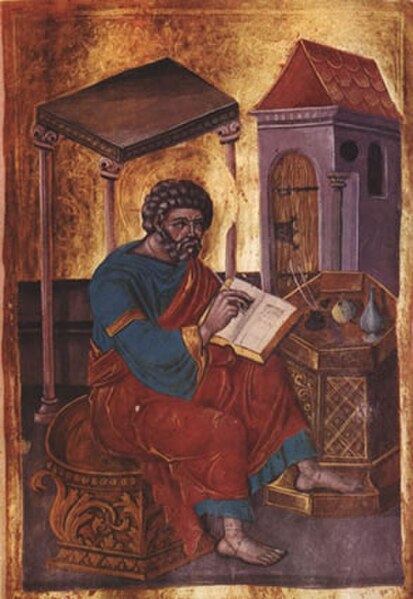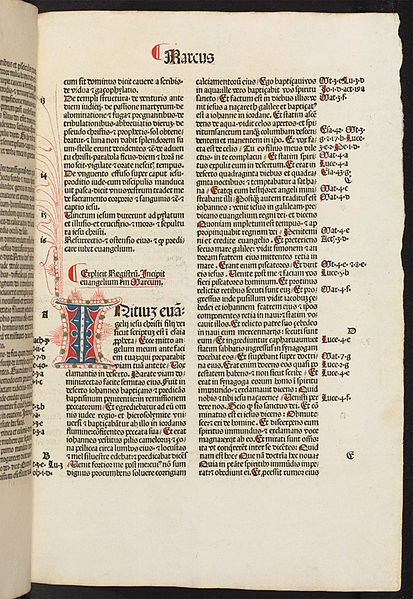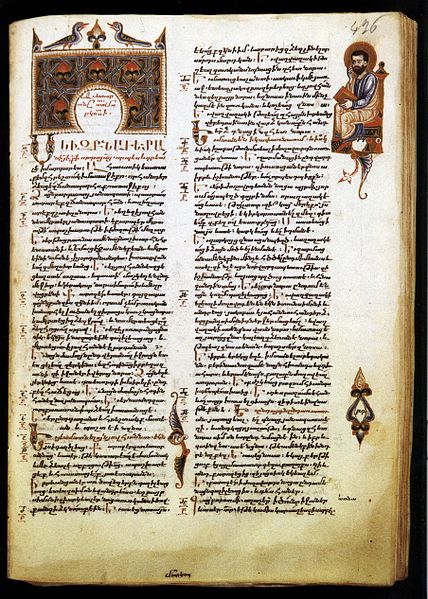The Sabbath is a weekly day of rest or time of worship given in the Bible as the seventh day. It is observed differently in Judaism and Christianity and informs a similar occasion in several other faiths. Observation and remembrance of Sabbath is one of the Ten Commandments considered to be the fourth in Judaism, Eastern Orthodoxy, and most Protestant traditions, and the third in Roman Catholic and Lutheran traditions.
Illustration from the first engraved Christian Bible in Russian (1696), depicting God reposing on Sabbath
Sabbatai Zevi in 1665
Yemenite Jew blowing the shofar (ram's-horn trumpet) for Sabbath in the 1930s
"Der Samstug (Sabbath)", Frederich Campe, 1800: German Jews, wearing baretta hats, gather outside a synagogue on Sabbath.
The Gospel of Mark is the second of the four canonical gospels and one of the three synoptic Gospels. It tells of the ministry of Jesus from his baptism by John the Baptist to his death, the burial of his body, and the discovery of his empty tomb. It portrays Jesus as a teacher, an exorcist, a healer, and a miracle worker, though it does not mention a miraculous birth or divine pre-existence. He refers to himself as the Son of Man. He is called the Son of God but keeps his messianic nature secret; even his disciples fail to understand him. All this is in keeping with the Christian interpretation of prophecy, which is believed to foretell the fate of the messiah as suffering servant.
Andrea Mantegna's St. Mark, 1448
Mark the Evangelist, 16th-century Russian icon
Page from Mark in a Latin Bible dated 1486 (Bodleian Library, Oxford)
First page of the Gospel of Mark: "The beginning of the gospel of Jesus Christ, the Son of God", by Sargis Pitsak (14th century)








